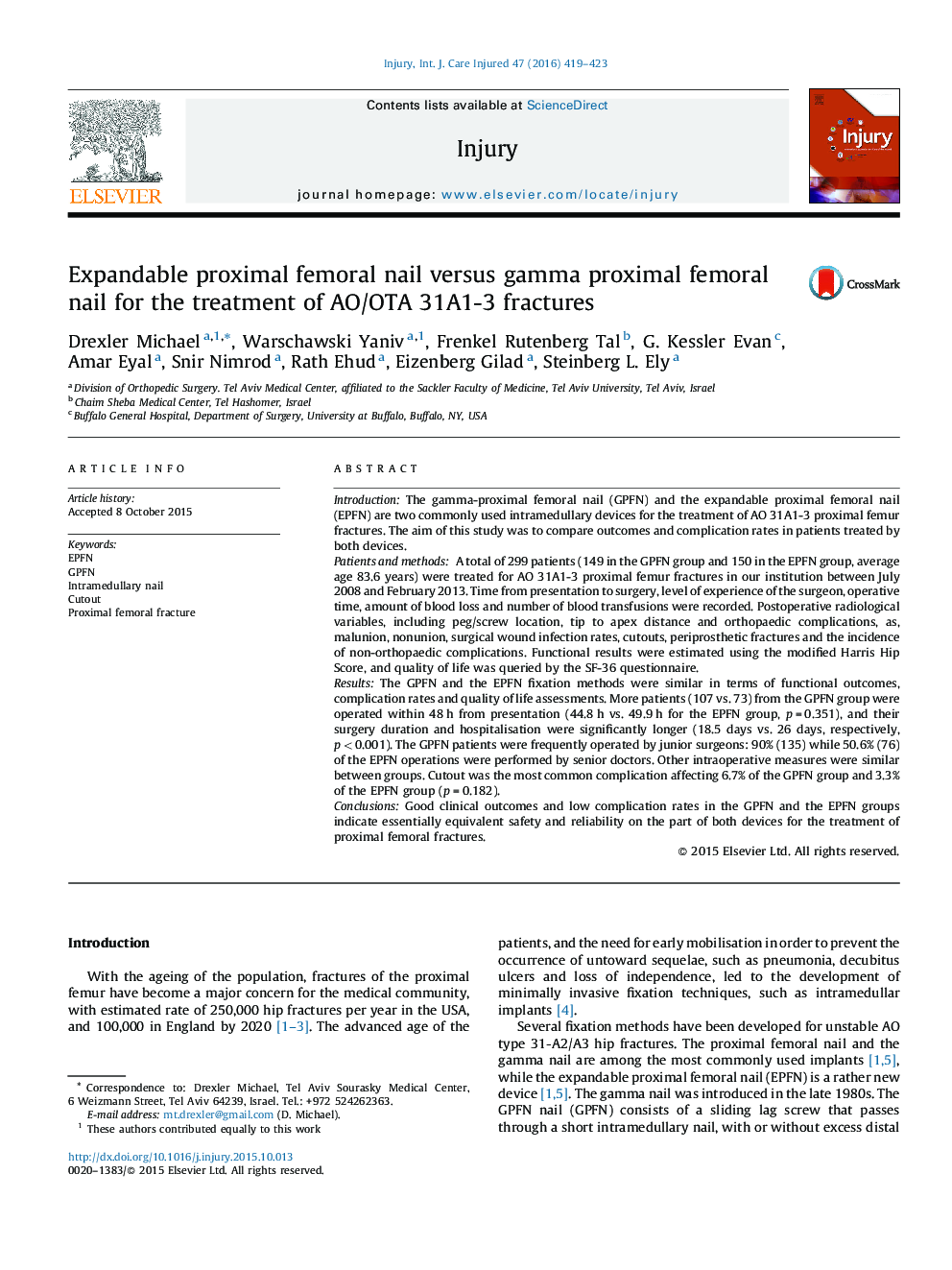| کد مقاله | کد نشریه | سال انتشار | مقاله انگلیسی | نسخه تمام متن |
|---|---|---|---|---|
| 3239015 | 1205980 | 2016 | 5 صفحه PDF | دانلود رایگان |

IntroductionThe gamma-proximal femoral nail (GPFN) and the expandable proximal femoral nail (EPFN) are two commonly used intramedullary devices for the treatment of AO 31A1-3 proximal femur fractures. The aim of this study was to compare outcomes and complication rates in patients treated by both devices.Patients and methodsA total of 299 patients (149 in the GPFN group and 150 in the EPFN group, average age 83.6 years) were treated for AO 31A1-3 proximal femur fractures in our institution between July 2008 and February 2013. Time from presentation to surgery, level of experience of the surgeon, operative time, amount of blood loss and number of blood transfusions were recorded. Postoperative radiological variables, including peg/screw location, tip to apex distance and orthopaedic complications, as, malunion, nonunion, surgical wound infection rates, cutouts, periprosthetic fractures and the incidence of non-orthopaedic complications. Functional results were estimated using the modified Harris Hip Score, and quality of life was queried by the SF-36 questionnaire.ResultsThe GPFN and the EPFN fixation methods were similar in terms of functional outcomes, complication rates and quality of life assessments. More patients (107 vs. 73) from the GPFN group were operated within 48 h from presentation (44.8 h vs. 49.9 h for the EPFN group, p = 0.351), and their surgery duration and hospitalisation were significantly longer (18.5 days vs. 26 days, respectively, p < 0.001). The GPFN patients were frequently operated by junior surgeons: 90% (135) while 50.6% (76) of the EPFN operations were performed by senior doctors. Other intraoperative measures were similar between groups. Cutout was the most common complication affecting 6.7% of the GPFN group and 3.3% of the EPFN group (p = 0.182).ConclusionsGood clinical outcomes and low complication rates in the GPFN and the EPFN groups indicate essentially equivalent safety and reliability on the part of both devices for the treatment of proximal femoral fractures.
Journal: Injury - Volume 47, Issue 2, February 2016, Pages 419–423